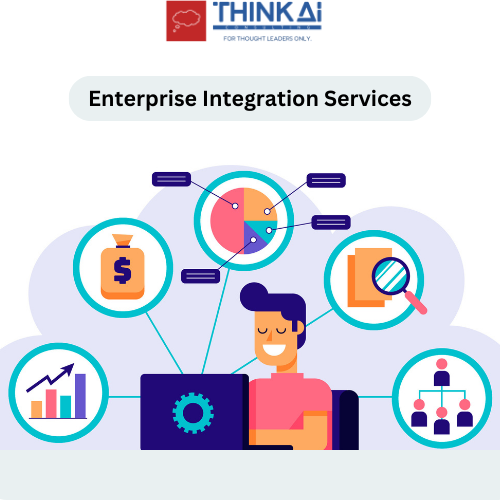In today’s fast-paced digital environment, enterprises are faced with a monumental challenge: how to seamlessly connect an array of diverse applications, devices, clouds, and networks while managing exponential growth in data volumes.
The answer lies in the power of enterprise integration services, a transformative approach that enables businesses to stay agile, responsive, and profitable amidst global disruptions and shifting customer demands.
Enterprise integration is the strategic use of technology and methodologies to tightly connect every element within an IT landscape, including applications, data, clouds, APIs, processes, and devices.
It goes beyond merely adding new software and tools; true integration occurs when teams, customers, partners, and systems can collaborate in real time, fostering a cohesive and streamlined operational environment.
Significance of Enterprise Integration Services
Enterprise integration empowers businesses in several key ways:
Optimized and Automated Processes: Integration eradicates fragmented and disconnected processes, enhancing operational efficiency and ensuring consistent user experiences.
Better Customer Insight: By consolidating diverse customer information sources, integration provides a 360-degree view of customers, enabling businesses to comply with privacy regulations and offer personalized services.
Futureproofed IT Landscape: Integration bridges legacy systems with modern cloud technologies, allowing companies to extract real-time data from old systems while supporting new business models.
API Economy Opportunities: Integration facilitates the use of APIs to build ecosystems, exchange information seamlessly, and drive competitive differentiation through innovative services and business models.
Depending upon your firm’s needs and budget, you can use any of the following types of integration to better manage your company’s IT-related issues and needs.
Types of Integration
Application Integration (EAI): Optimizes, integrates, and shares processes and data between separate software applications in real time.
Data Integration(DI): Discovers, retrieves, and compiles data from disparate sources into a unified view.
Cloud Integration(CI): Pulls together multiple hybrid cloud environments into a cohesive IT infrastructure.
API Integration (API-I): Connects enterprise applications via APIs for data exchange, enhancing organizational productivity.
Platform Integration (PI): Uses comprehensive software products to connect and govern disparate applications, systems, services, and data sources.
Most business firms rely on the following platforms and technologies to achieve seamless integration.
Enterprise Integration Platforms and Technologies
Integration Platform as a Service (iPaaS): Supports cloud, on-premise, and B2B integration, offering a multi-tenant platform for diverse integration scenarios.
Prompt Messaging: Enables communication between components in distributed applications.
Application Connectors: Standard class connections customized for specific APIs, facilitating quick integration of new endpoints.
Enterprise Integration Patterns (EIPs): Technology-independent solutions to common integration problems, providing a common language for developers.
Application Programming Interfaces (APIs): Tools and protocols for building application software, allowing seamless communication between products and services.
Best Practices in Enterprise Integration
Platform Approach: Cater to a wide range of integration use cases across on-premise, cloud, and hybrid ecosystems.
APIs as Building Blocks: Use APIs to transform digital assets into new business models and support integration of people, processes, and systems.
Democratize Integration: Empower all users with intuitive, no-code build experiences to maximize business value.
Smart Lifecycle Management: Implement ongoing management plans with access control, change management processes, and data encryption.
Continuous Improvement: Use integration activity analytics and predictive intelligence to enhance decision-making and automate processes.
Conclusion
In the face of evolving business landscapes, enterprise integration services stand as the linchpin for sustainable growth, improved efficiency, and enhanced customer experiences.
By adopting the right integration strategies and technologies, businesses can navigate the complexity of modern IT environments and emerge stronger, more adaptable, and highly competitive. Embracing enterprise integration is not just a choice; it’s a strategic imperative for the enterprises of tomorrow.

